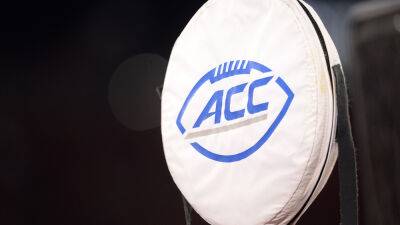College football’s megaconference era is nigh. Who stands to win and lose?
It’s 2032. At long last, humans have landed on Mars.
Back on Earth, US sports fans have a simple question: Is the Mars colony in the Big Ten or the SEC?
Back here in 2022, the travel distances are already veering into the astronomical, and the gravitational pull of college sports’ “megaconferences” is relentless. UCLA and USC (the California one, not the Carolina one, though the latter would make slightly more sense geographically) are leaving the Pac-12 – which is supposed to be for teams on the Pacific coast – to join the increasingly inaccurately named Big Ten (which will have 16 members by the time UCLA and USC arrive in 2024).
It’s a move driven entirely by marketing money. The Big Ten – which for most of its existence was based around teams in the midwest – is on the cusp of some mammoth TV deals, and southern California is an attractive market.
And UCLA and the Big Ten need the money. The Big Ten pays out more money to its members than any other conference, according to research firm Navigate, but Covid wrecked several schools’ slim budget surpluses. In 2021, many schools posted eight-figure losses, according to data compiled by the Knight Commission and Syracuse University. Meanwhile, UCLA lost more than $62m in 2021, bringing its three-year deficit over $103m. (USC, as a private university, doesn’t have its books available to the Knight/Syracuse researchers.)
But who really benefits here? And who loses?
Division I football, the top level of the college game, has long been split into two subdivisions. They were formerly known as Division I-A and Division I-AA, but are now called the “Football Bowl Subdivision” (teams that can play in bowl games and the national championship playoffs) and the “Football





